Aguahoja
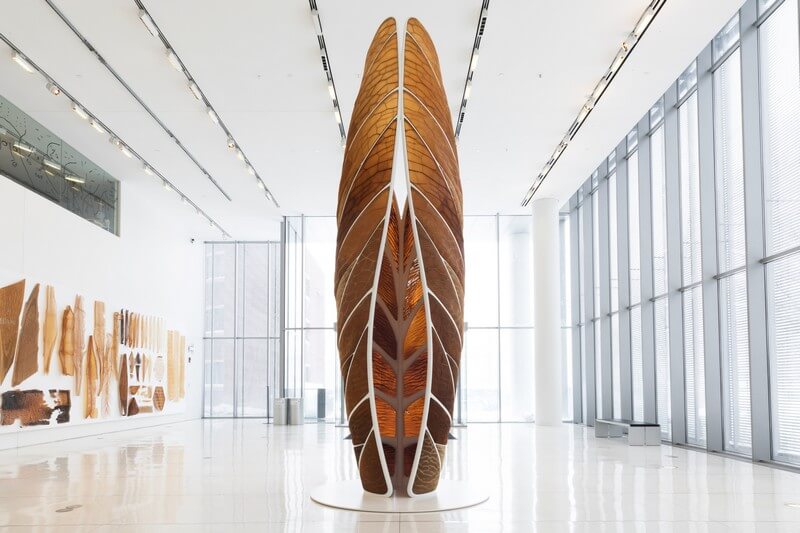
Neri Oxman and MIT have developed programmable water-based biocomposites for digital design and fabrication. Named Aguahoja, the project has exhibited both a pavilion and a series of artifacts constructed from molecular components found in tree branches, insect exoskeletons, and our own bones.
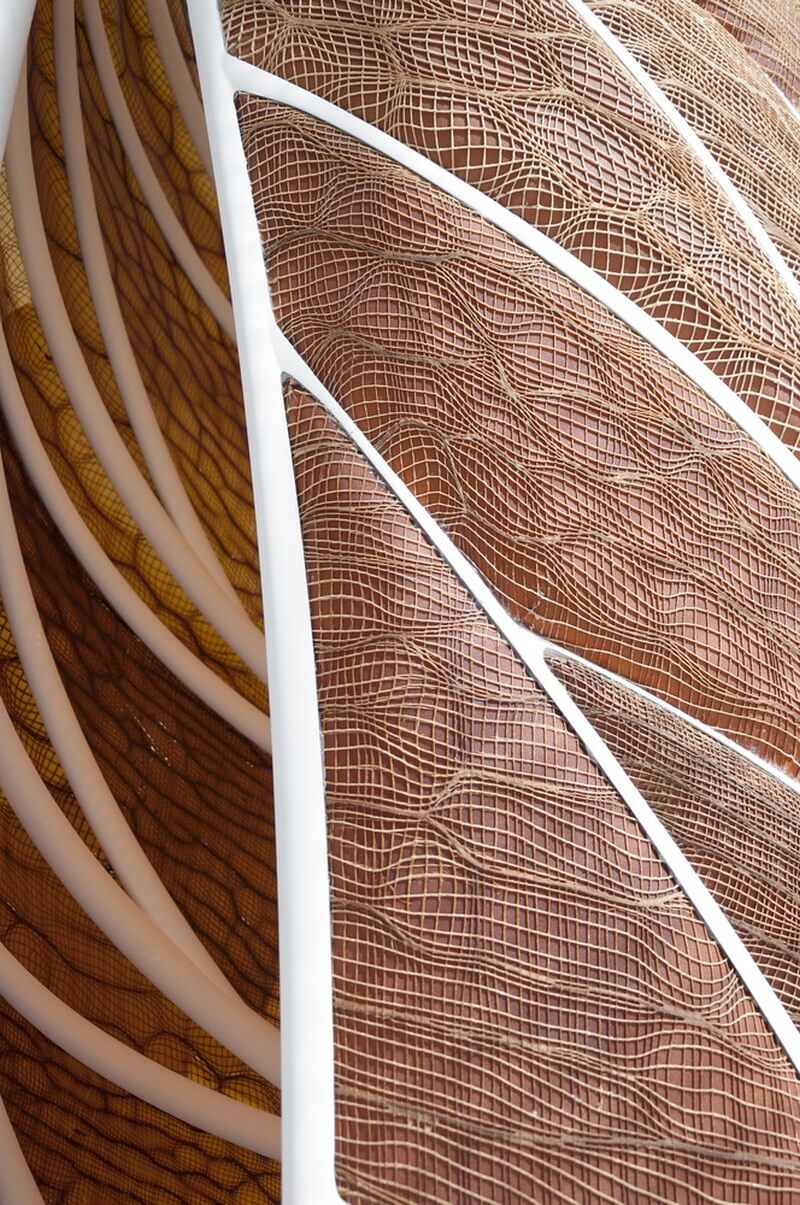
It uses natural ecosystems as inspiration for a material production process that produces no waste. Derived from organic matter, printed by a robot, and shaped by water, this work points toward a future where the grown and the made unite.
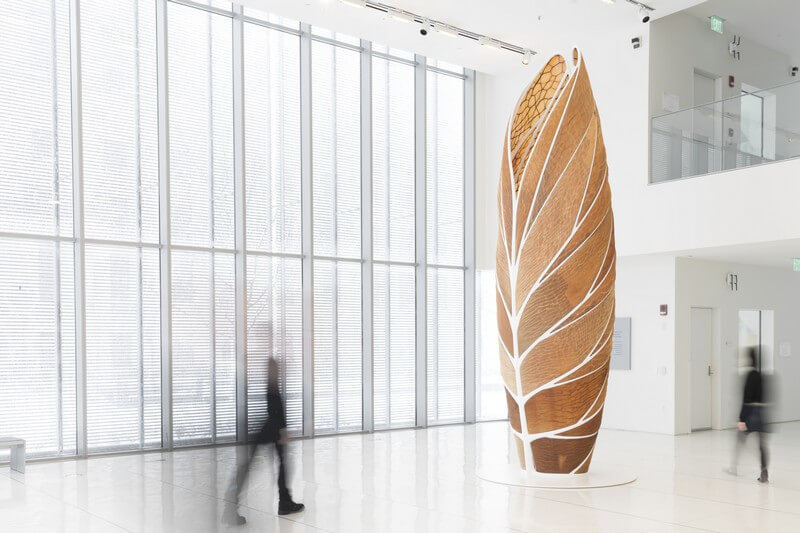
Using a design approach that facilitates a tight integration between material creation and robotic fabrication, the project allows for the creation of objects across a range of scales. It examines the importance of water in Nature’s systems, the cycles of birth, adaptation and decay allowing ecosystems to re-use materials again and again.
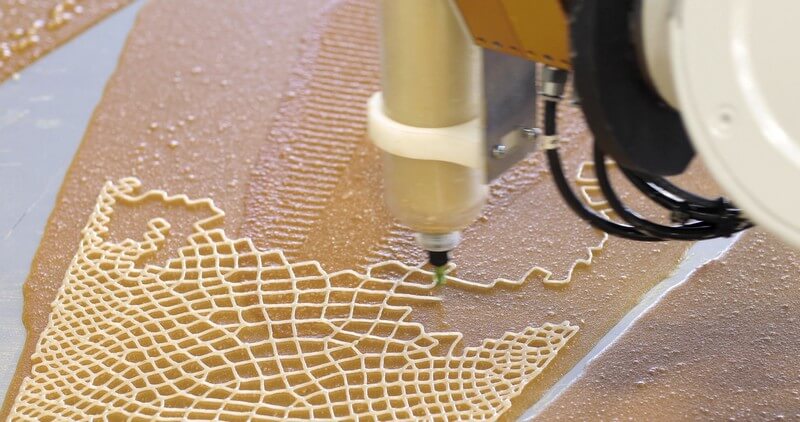
By using old growth forests and coral reefs as inspiration, where waste is virtually non-existent, the design team compared this to the waste production rates of our building industries, where objects have an expiry date and materials are extracted from the earth faster than they can be replenished.
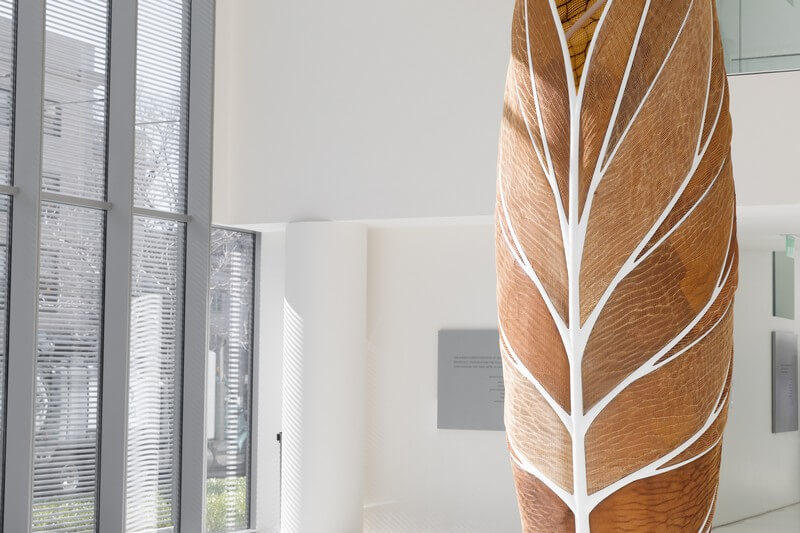
The biocomposites used by Aguahoja are composed of the most widely-found materials of our planet– cellulose, chitosan, and pectin. These are then digitally fabricated to create materials with specific properties that can change in response to heat and humidity. In death, these materials dissociate in water, eliminating the production of waste and fuelling new life.
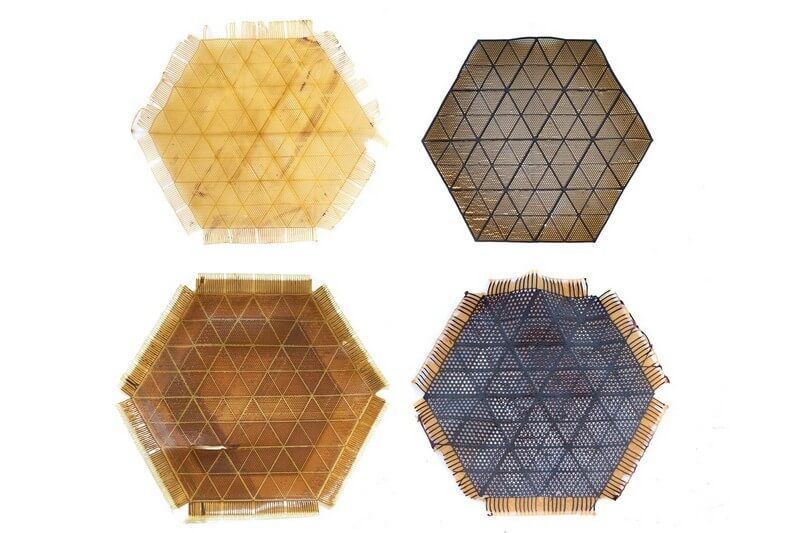
Continued research on the application of environmentally responsive biocomposites has led to the first architectural-scale iteration the Aguahoja series. Standing five meters tall, the structure’s skin is composed of a flexible biocomposite with functionally graded mechanical, chemical, and optical properties.
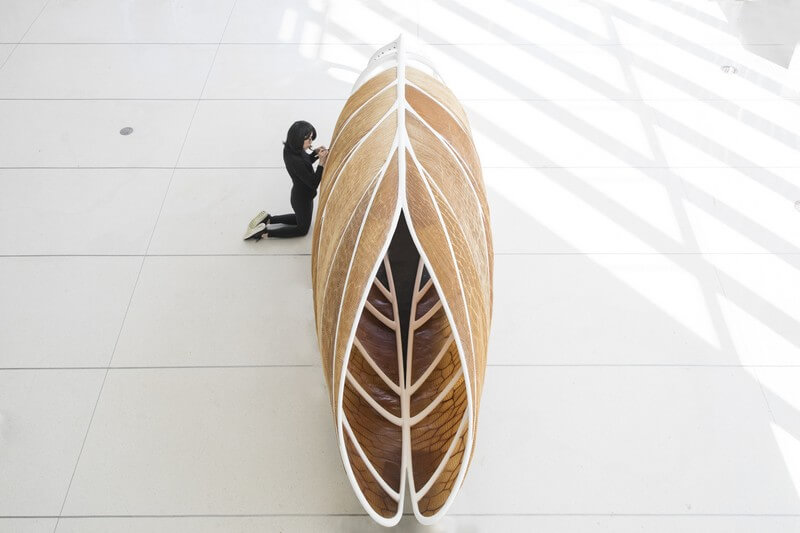




























Comments